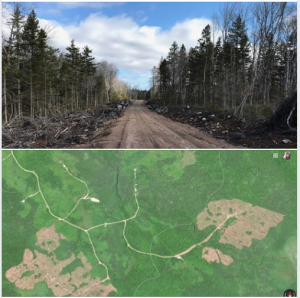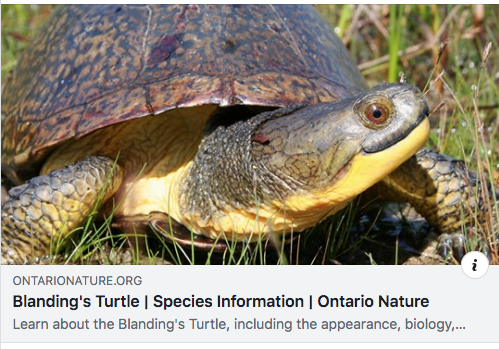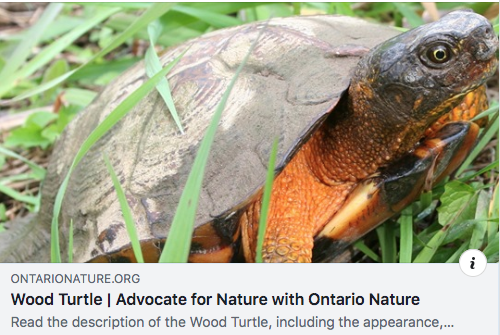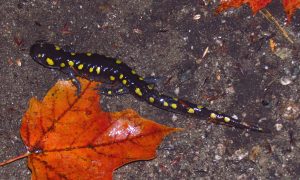 Bev Wigney is an Annapolis area naturalist concerned about the state of our forests. She posted this ‘Sunday morning rant’ on Forest Roads on the Facebook page for Annapolis Royal & Area – Environment & Ecology, a public Facebook group, on May 26, 2019.
Bev Wigney is an Annapolis area naturalist concerned about the state of our forests. She posted this ‘Sunday morning rant’ on Forest Roads on the Facebook page for Annapolis Royal & Area – Environment & Ecology, a public Facebook group, on May 26, 2019.
In the ongoing controversies over logging, and about clearcutting in particular in NS, we don’t hear much about the impacts of forest roads. Bev raises some really critical issues so I asked for her permission to re-post her comments on NSFN. Extraction trails are also problematical, discussed in a subsequent post by Bev W., copied in part below.
———-
On Forest Roads in Nova Scotia
Earlier this week, you will have seen what I posted about the threat of roads to turtle populations. Yesterday and today, I posted some links to articles about the threat of roads to moose and other animals – the latest being the article by Robert Bateman and Vicki Husband about the impact of roads and logging on caribou in B.C.
Many people in Nova Scotia have never driven into a typical labyrinth of roads built solely for the purpose of providing access to forests for logging. I think it’s probably a sure bet that almost *no* politicians have ever driven into one of these logging labyrinths. Most people don’t have any idea about the fragmentation that is happening in the forests all across the province.
So, what about these roads? Why are they such a problem? Isn’t it *nice* to be able to drive into almost every square patch of forest in the province? Isn’t it *convenient*. Now we can go absolutely everywhere we feel like going!!
I’m sure almost everyone reading the previous paragraph realizes that all of these forest roads are not something to be thrilled about. They are a growing problem to wildlife. Before I came out here to Nova Scotia, I was involved in some forest planning for community forests in Ontario. What happens when you build a new forest access road? A bunch of stuff — most of it not too damned pleasant.
* ROAD CONSTRUCTION DESTROYING HABITAT: What are the odds that a very skilled and qualified herpetologist is brought in to conduct ground surveys of every road route to check for turtle populations in all of the small wetland and boggy areas that will be MASHED AND FILLED WITH ROCK RUBBLE during the building of each of these roads? Just at Corbett-Dalhousie Lake Forest, a few feet from all the torn up stuff in the shoulder of the road in one of these photos was a wonderful little boggy area of sphagnum moss and vernal pools. How much do you want to bet that the soggy mess of black muck and busted trees to the left of the road in this photo once looked like that wonderful little spot until last July when this road was mashed down the center of the peninsula?
* POACHING – because, hey, you don’t even need an ATV to get into places to kill a Moose, or capture turtles to be sold for food or to collectors, or, back in Ontario, raid a Ginseng colony. Yup. You can just hop in your pick-up or SUV and go for a cruise into just about any place you like to get the thing you want. Let’s make things simple for the poachers!!
* ROAD MORTALITY — because, hey, it’s not like no turtle was ever crushed when crossing a road to its habitual nesting site, or moving to a wetter area during a drought.
* INVASIVE PLANTS – Moving in to fill in all that disturbed soil. Invasives such as Glossy Buckthorn and non-native Phragmites just *love* messed up landscapes. And, yes, lets add TICKS to this as they love those places where scrappy stuff likes to grow up out of the mess.
* WASTE DUMPING – sometimes insane amounts of dumping of construction waste. I’ve even seen dump truck loads of tractor tires — and once, several bags of trash from what was probably a meth lab back when I was doing volunteer trail maintenance in Ontario.
* PARTY FIRES – which can lead to FOREST FIRES. If you build it, they will come. By “they”, I mean stupid oafs who don’t really care too much about nature.
* PROVIDING AN “EDGE” FOR PREDATOR SPECIES – like coyote (and wolves in Ontario and elsewhere) so that they can easily move through the forests.
If I think about this for another couple of minutes, I expect I can come up with more points, but really, how many more points do we need to see that building an extensive network of roads into every part of the province isn’t a particularly bright thing to do.
Some of the Comments
OC: I drove from Liverpool to Annapolis Royal today for the first time in a few years. I was applaud byvthecamount of cutting and amazed at the number of roads heading in to the cuts. That was just what i could see from hwy 8.
DGP: Another item to be added to your list: Deforestation/Forest Degradation. (The latter for forest trails etc recovering; the former for most forestry roads.) Where are the stats for this?
BW: My take on these roads is that they are being built as permanent access to “tree farm” plots – and that is why they are being constructed as they are — a lot of culverts, very wide, trucking in gravel, etc… So the intention is that these will remain permanently. As for the extraction roads, they really hack up the understory and I doubt that understory plants will regrow for at least a couple of decades (and in some cases, if a colony of plants is destroyed – perhaps never). When I have been at Corbett Lake standing in the final extraction lane the soil was already getting dried out in the mounds — it was obvious that it was drying out and that is even in this rather rainly weather we have been having. Compare that to the moss covered mounds a few metres away and it is *obvious* that these cuts are creating a very different habitat — one that DOES NOT favour typical understory vegetation of an “old forest”.
NN: When I got lost looking for the Corbett-Dalhousie Lake forest, I was stunned by the number of logging roads criss-crossing the land.. And, if I remember rightly, the forest destroyed to make these roads isn’t counted as part of the percentage of a particular parcel that was cut. I guess that only makes a difference on those rare occasions when they’re not cutting 100% of what’s there.
BW: So far as I know, that’s correct, Nina. Roads are not counted as part of a harvest even though a substantial area of forest may be removed to create these roads.
————
Related posts by Bev Wigney on Annapolis Royal & Area – Environment & Ecology
May 27, 2019: The 35% Question (Facebook Post)
“Last Thursday, I received a reply from Forestry Maps (no human name attached to the email) answering some questions I had posed to them over the previous weeks. One answer in particular bothers me. I asked about the statement made by both Min. Iain Rankin, and Westfor’s Marcus Zwicker – on CBC Information Morning – that only around 35 percent of the trees in the stand would be removed. Okay, since then, I was told that that percentage doesn’t include the trees that have to be cut down to make extraction lanes through the forest to access what are called the “leave strips”. To make an extraction lane, you have to remove all of the trees so that you have a “lane” to drive in with the equipment. Everyone who has been out to Corbett-Dalhousie Lake Forest knows what these look like — they are wide “lanes” running side by side into the forest — going east west up to the 20 meter buffer zone along the lake shoreline.
So, all the trees cut down to make those lanes are not counted in the harvest. Nor are the trees cut down to make the big road down the center of the peninsula – 750 metres in in length and probably about 30 metres or more across (the trees cut down, I mean). The “leave strips” are no wider than the extraction lanes — in fact, I think they would be a little less. I should bring my measuring tape and check that next time I go. We are told the loggers remove “around 35 percent” of the trees that are still standing in these “leave strips” so those are the “around 35 percent” of the trees that Rankin and Zwicker are referring to when they say that it is a “partial” or “individual tree selection” cut. I’ll post Forestry Maps explanation of this below – and below that, I’ve posted my reply to them… (read post for more)
Some of the Comments
FS: after they’ve taken out all these strips, how many of the reamaining trees are going to blow down when there’s a hurricane or other strong windstorm? …and have they calculated how much of the soil nutrients are going to be removed or leached away by such a brutal thinning?
BW: Exactly!! And especially with a sizable lake to the west of this sloping peninsula — where some of our strongest wind storms come out of the west and southwest. It will be a forest massacre for sure.
DGP: Be careful. They use fear of blowdown as a reason to clearcut (rather than not to cut at all, that’s not an option).
BW: Yes, I know — and that’s the scary part of what they are doing. At a meeting a couple of weeks ago, someone was telling me of several property owners in our area who have had major blowdowns on their property since their neighbours’ properties were clearcut. Of course, LAF would say, well, then we should clearcut your forest too!!!
May 22, 2019: On BLANDINGS TURTLES (Facebook Post)
On this International Day of Biodiversity, I’m going to take this day to highlight two of Nova Scotia’s endangered turtle species. This first post is about the Blanding’s Turtle. There are several known populations in Nova Scotia, but there may be more. Please view the photos and info on this page which I have linked to – it’s from Ontario, but the photos and information are still entirely applicable to our province. If you should SEE a Blanding’s turtle — alive OR even dead — PLEASE take a photo and try to take a location of where you saw it. This information is vital to locating any new populations. Of particular interest to most of us here, is that the presence of Blanding’s turtles can help to *protect* an area from certain human activities (development, deforestation, etc..). Another point about these turtles is that they are both long-lived and also slow to mature — not reaching reproductive age until almost 20 years of age. Every turtle counts in helping this species to survive!! We are just heading into turtle nesting season, so turtles will be out and about, crossing roads, digging nests to lay eggs, basking in the sun along waterways. This is the PERFECT time to be watching for them. Let’s all make a point of watching for this species when we are out and about. If you see one, please contact either Mersey Tobeatic Research Institute, or Clean Annapolis River Project to report your sighting. You may also contact me and I would get that information reported.

May 22, 2019: On WOOD TURTLES
On this International Day of Biodiversity, I’m going to take this day to highlight two of Nova Scotia’s endangered turtle species. This second post is about the Wood Turtle. There are several known populations in Nova Scotia, but there may be more. Please view the photos and info on this page which I have linked to – it’s from Ontario, but the photos and information are still entirely applicable to our province. If you should SEE a Wood Turtle — alive OR even dead — PLEASE take a photo and try to take a location of where you saw it. This information is vital to locating any new populations. Of particular interest to most of us here, is that the presence of Wood Turtles can help to *protect* an area from certain human activities (development, deforestation, etc..). These are very active turtles, often ranging quite far up streams, in woods, and on agricultural lands. Another point about these turtles is that, much like the Blanding’s Turtle, they are both long-lived and also slow to mature — not reaching reproductive age until almost 20 years of age. Every turtle counts in helping this species to survive!! We are just heading into turtle nesting season, so turtles will be out and about, crossing roads, digging nests to lay eggs, basking in the sun along waterways. This is the PERFECT time to be watching for them. Let’s all make a point of watching for this species when we are out and about. If you see one, please contact either Mersey Tobeatic Research Institute, or Clean Annapolis River Project to report your sighting. You may also contact me and I would get that information reported.

———–
Some Related Scientific Literature
ROAD DENSITY AND POTENTIAL IMPACTS ON WILDLIFE SPECIES SUCH AS AMERICAN MOOSE IN MAINLAND NOVA SCOTIA
by Karen F. Beazley et al., 2004. Proceedings of the Nova Scotia Institute of Science 42, Part 2, pp. 339-357 Full text is available. ABSTRACT “Habitat conversion, degradation and fragmentation, and the introduction of exotic species are among the primary factors causing the loss of biodiversity. Road density is a valuable indicator of these anthropogenic factors. Deleterious biological effects extend more than 1000 metres from roads, and road density of 0.6 km/km2 has been identified as an apparent threshold value above which natural populations of certain large vertebrates decline. Road density assessments in Nova Scotia indicate that many areas exceed this threshold. Multivariate logistic regression analyses indicate relationships between road density, moose pellet distribution, and habitat suitability values. Road density has a statistically significant negative correlation with moose pellets, such that as road density increases, the probability of moose pellet presence decreases. Road density alone and road density in combination with habitat suitability index values predict the presence of moose pellets, whereas habitat suitability values alone do not. Thus, road density may be an indicator of moose habitat selection or effectiveness in mainland Nova Scotia. Biodiversity conservation activities in Nova Scotia and elsewhere could focus on discouraging further road densities above 0.6 km/km2; protecting remaining roadless and low road density areas; minimizing new road construction, especially in natural areas; decommissioning and regenerating old logging roads; increasing buffer zones between natural areas and roads; and providing road crossings for wildlife in the form of under and overpasses.”
A conceptual framework for understanding, assessing, and mitigating ecological effects of forest roads (Full Text)
C. Robinson et al., Environmental Reviews 2010, 18(NA): 61-86. From the Abstract: “A review of road-ecology literature suggests that impacts of forest roads on species and ecosystems begin during the road construction phase, but persist and accumulate well after a road is no longer in use…This paper presents a conceptual framework for organizing, synthesizing, and applying our growing understanding of how roads affect forest ecosystems…Highlights of a case study conducted in southwestern Nova Scotia are presented to illustrate the applicability of the framework.”

Spotted Salamander By D. Gordon E. Robertson – Own work, CC BY-SA 3.0 . According to the research cited at left, spotted salamander will leave a forest edge and cross open land to get to a water body, but is much less likely to cross a road.
Amphibian Movements in Response to Forest Edges, Roads, and Streambeds in Southern New England
James P. Gibbs. 1998. Journal of Wildlife Management 62: 584-589 ABSTRACT: “If management of landscape linkages is to be promoted as a means of conserving amphibian populations, it must be demonstrated that amphibian dispersal does not occur independently of ecosystem edges and other salient landscape features. I used drift fences and pitfall traps to intercept dispersing amphibians and examine amphibian movements relative to roads, forest edges, and streambeds in a forest tract in southern Connecticut. Capture rates of 3 species (marbled salamander, Ambystoma opacum; red-spotted newt, Notophthalmus viridescens; pickerel frog, Rana palustris) were influenced by forest borders and streambeds, whereas captures of 3 other species (spotted salamander, Ambystoma maculatum; redback salamander, Plethodon cinereus; wood frog, R. sylvatica) were not. Across all species, the relative permeability of forest-road edges was much reduced in comparison to the forest interior and to edges between forest and open land. The data suggest that landscape-level conservation strategies aimed at amphibians should account for such filters and conduits to amphibian movement.”
NOTE “Permeability of forest edges to amphibian movement” was calculated as the ratio of mean total captures at the 10 forest-edge drift fences to the mean total captures at the 15 forest-interior drift fences. The author uses the term permeability to reflect the magnitude of reduction or increase in amphibian movement at ecosystem edges relative to continuous forest. FROM THE DISCUSSION “…this study demonstrated that movement by woodland amphibians is facilitat- ed by certain landscape features and hindered by others (see also deMaynadier and Hunter 1998, Rosenberg et al 1998). Roads are known to pose a functional barrier to other small-bodied, ground-dwelling animals such as small mammals, snails, and butterflies (see Bennett 1991), and this study indicates that roads also substantially hinder amphibian movements (Table 3). Notably, woodland amphibians will at tempt to traverse open lands lacking roads, particularly where streambeds occur (Tables 2 and 3). Because of the importance of dispersal in amphibian life-history strategies (Wilbur 1980, 1984), any landscape-level conservation strategy aimed at amphibians should account for such filters and conduits to movement (Harris and Scheck 1991). Further research would be useful on the responses of amphibians to other types of habitat edges (e.g., deMaynadier and Hunter 1998), the utility of habitat corridors for facilitating dispersal processes (e.g., Rosenberg et al 1998), and the implications of amphibian responses to habitat edge relative to amphibian population persistence.”
The impact of heavy traffic on forest soils: A review
Martina Cambia et al. 2015. Forest Ecology and Management 338: 124–138
Highlights
• Heavy vehicles used for logging impact the physical properties of forest soils.
• Soil compaction and rutting are the most common effects of traffic.
• Soil compaction limits oxygen and water supply to plants and soil microorganisms.
• Forest productivity and regeneration can be seriously reduced in compacted soils.
• Increased runoff and erosion are frequent ramifications of soil compaction and rutting.
Influence of skid trails and haul roads on understory plant richness and composition in managed forest landscapes in Upper Michigan, USA
David S Buckley et al., 2003. Forest Ecology and Management 175: 509-520. ABSTRACT: “…On average, haul roads and skid trails comprised 1 and 16% of total managed stand area, respectively. Compaction, PAR, and soil moisture were highest in haul roads. Understory plant richness was significantly greater in haul roads than in skid trails and forest, and resulted from significantly greater percentages of introduced species (13%) and wetland species that were native to the area, but not normally abundant in northern hardwood stands (23%). Skid trails had a greater percentage of wetland species (9%) than in forest, but differences in richness between skid trails and forest were not statistically significant. Up to the present time, the impact of haul roads on understory vegetation has received far less attention than impacts on soil properties and water quality. Although haul roads comprise a relatively small proportion of total stand area, they serve as primary conduits for the dispersal of introduced species into the interior of managed stands and contribute to significant shifts in plant richness and composition at the stand level.”
